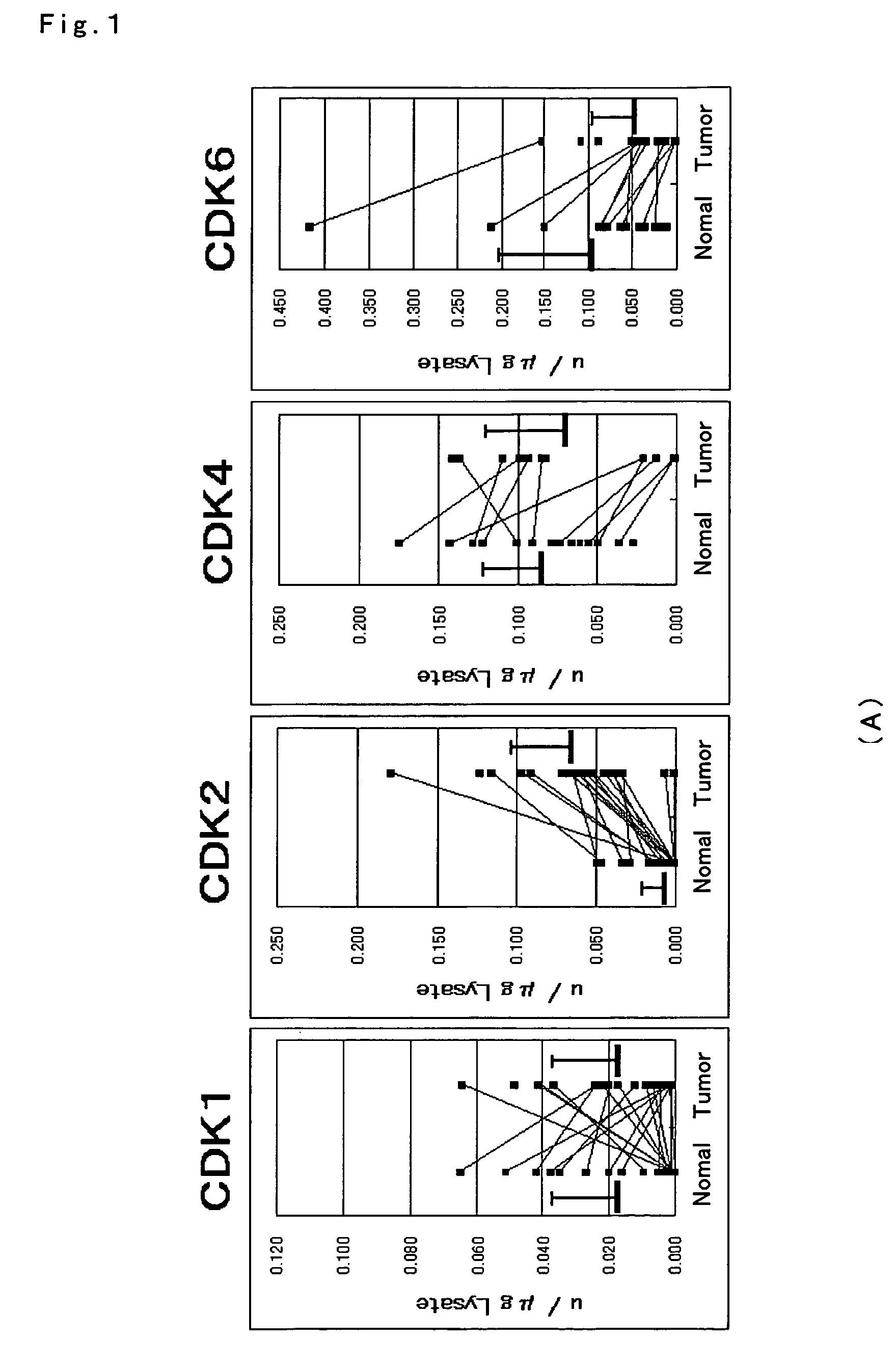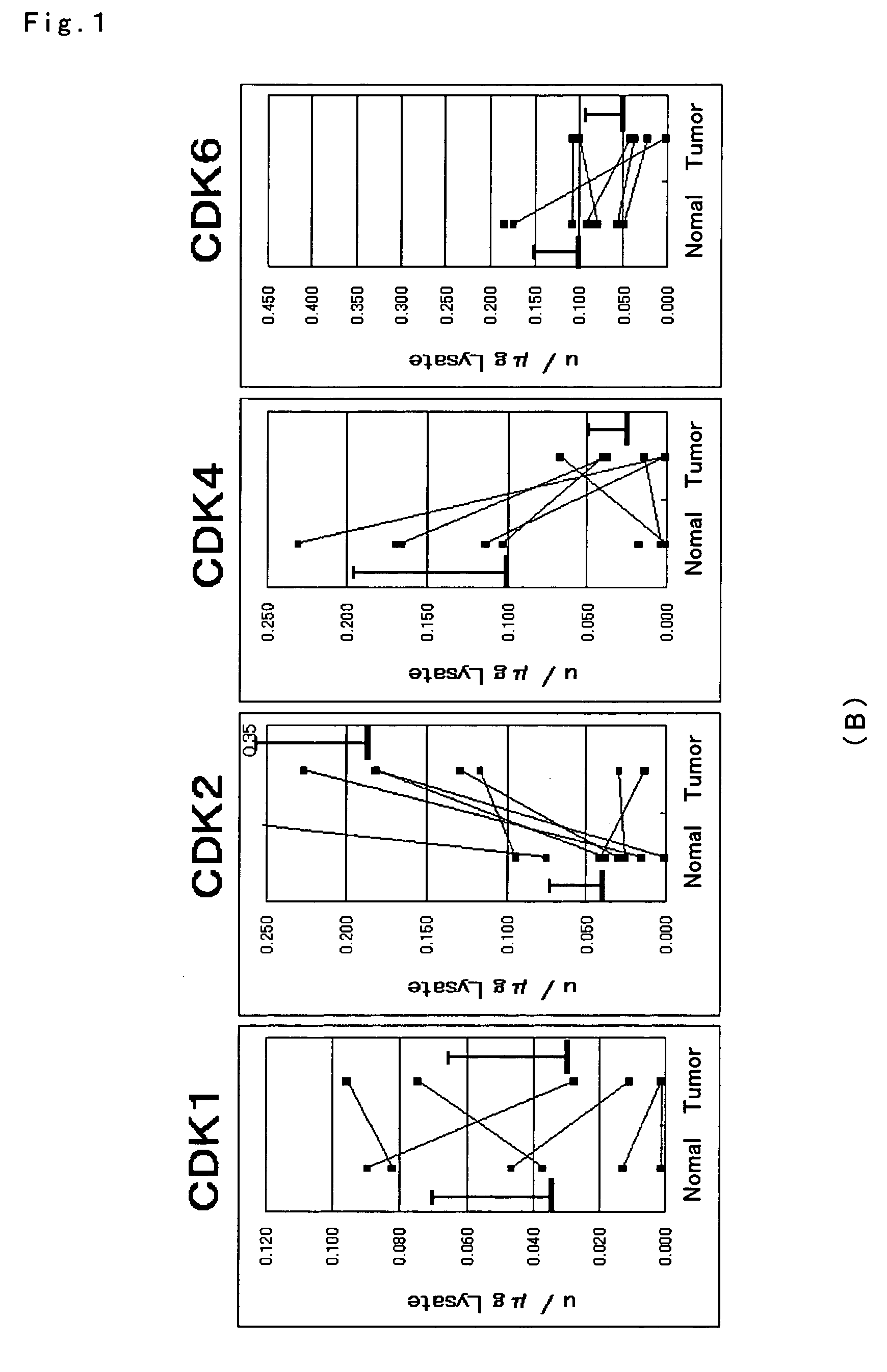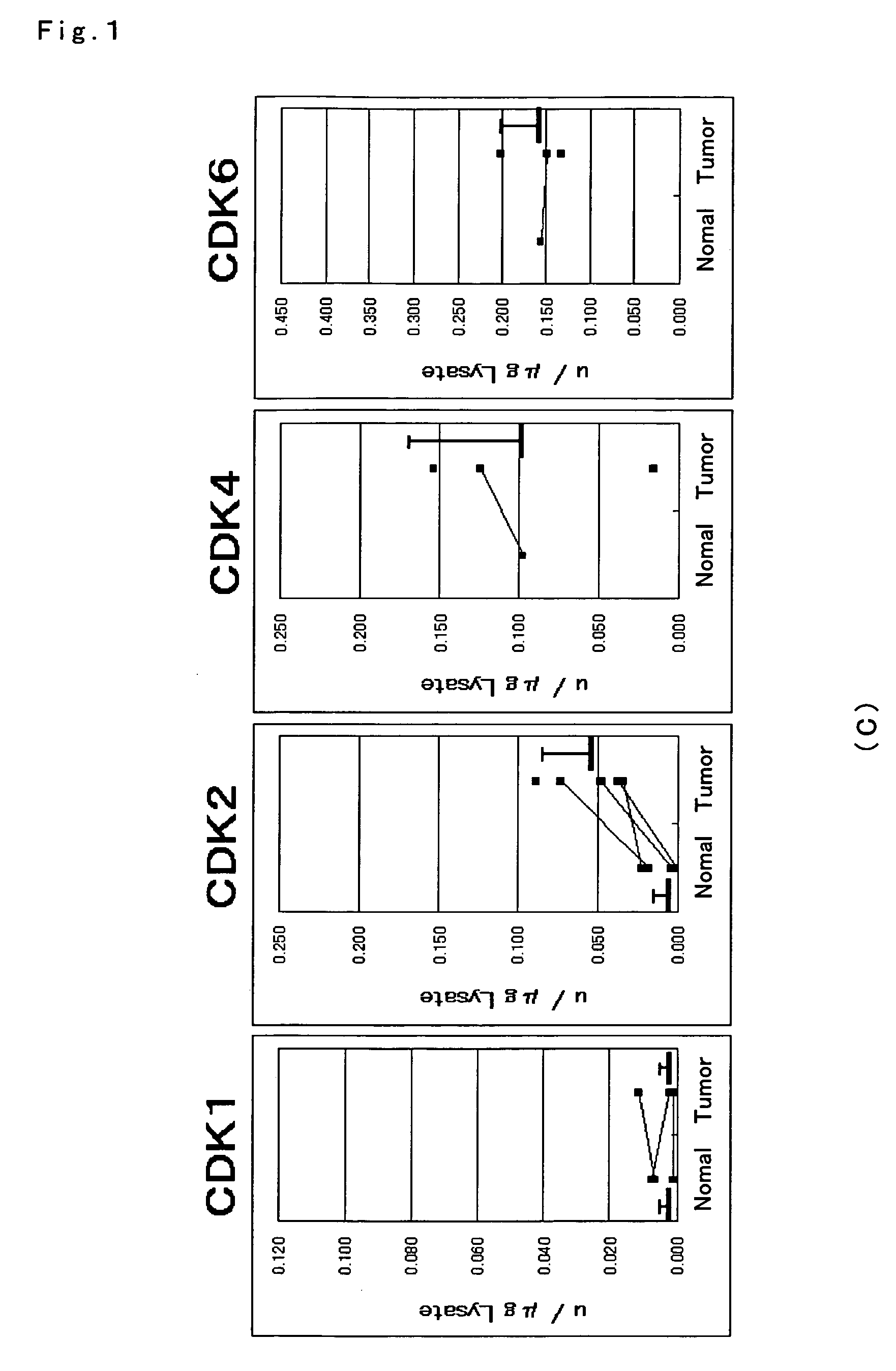Molecular diagnostic method of a cancer tissue or a cancer cell
a cancer cell and molecular diagnostic technology, applied in the field of tissue and cell formation, can solve the problems of significant problems of accompanying cell toxicity and cell turning into a malignant tumor
- Summary
- Abstract
- Description
- Claims
- Application Information
AI Technical Summary
Benefits of technology
Problems solved by technology
Method used
Image
Examples
example 1
Method of Cell Examination
1) Preparation of Tissue Sample for Measurement
[0047]Each surgically collected tissue (2 mm3) was ground with a lysis buffer containing Nonidet P-40 (NP-40) (manufactured by Calbiochem), and solubilized with a homogenizer. Insoluble substances were removed by a filter. Thus resulting cell lysate was employed as a tissue sample for the measurement.
2) Measurement of CDK Activity
[0048]A sample containing 100 μg of the total protein was added to 2 μg of an antibody (anti-CDK1, 2, 4 and 6 antibodies, manufactured by Santa Cruz) and 20 μl of protein A beads (manufactured by BioRad) to allow them to react at 4° C. for 1 hour and to precipitate CDK molecules.
[0049]After washing with a buffer (0.1% NP-40, 50 mM Tris-HCl, pH 7.0) three times, 50 μl of a substrate mixture containing proteins was added thereto followed by incubation at 37° C. for 10 minutes while shaking.
[0050]The substrate mixture contains 10 μg of histone H1 corresponding to CDK1 and CDK2 (manufactur...
example 2
CDK Activity
[0058]Each enzyme activity of CDK1, 2, 4 and 6 was measured for gastrointestinal cancer tissues and normal mucosa. Measurement of the activity was conducted with the method described in Example 1, for each of the tissues of (A) large intestine cancer of 22 cases, (B) stomach cancer of 8 cases, and (C) esophagus cancer of 7 cases as well as normal mucosa.
[0059]The results are depicted in FIGS. 1A to C. Consequently, with respect to difference of each enzyme activity between cancer tissues and normal mucosa, statistical significance was found in elevation of the CDK2 activity in the large intestine, stomach and esophagus tissues (P<0.01). On the other hand, CDK4 and CDK6 in the large intestine and stomach cancer tissues exhibited activities that were comparatively lower than those in normal mucosa. Statistical analysis was carried out with a Wilcoxon signed-ranks test. In crease in CDK2 enzyme activity was observed in almost of the large intestine, stomach and esophagus ca...
example 3
Profile of CDK activity
[0060]With respect to CDK (CDK2, 4, 6) in the G1 phase, the activity values of CDK2, 4 and 6 were standardized on the basis of the CDK1 activity value that is G2 / M kinase to determine the profile. Consequently, as shown by a solid line in FIG. 2A, in seven among 8 cases of normal large intestine mucosal tissues, CDK profile in the G1 phase positioned in the fold width of 0.024 to 0.43 for CDK2 / CDK1, 1.2 to 39 for CDK4 / CDK1, and 1.9 to 26 for CDK6 / CDK1, exhibiting a common pattern. This suggests that relative values of the CDK activities are similar among the normal large intestine tissues.
[0061]Next, the profile on the basis of value of CDK1 activity that is G2 / M kinase was similarly determined for CDKs (CDK2, 4, 6) in the G1 phase on randomly selected nine cases of large intestine cancer tissue. Consequently, as shown in FIG. 2B, no profile was observed which was identical to the common profile found in the normal mucosal tissues
[0062]According to the present...
PUM
| Property | Measurement | Unit |
|---|---|---|
| pH | aaaaa | aaaaa |
| pH | aaaaa | aaaaa |
| pH | aaaaa | aaaaa |
Abstract
Description
Claims
Application Information
 Login to View More
Login to View More - R&D
- Intellectual Property
- Life Sciences
- Materials
- Tech Scout
- Unparalleled Data Quality
- Higher Quality Content
- 60% Fewer Hallucinations
Browse by: Latest US Patents, China's latest patents, Technical Efficacy Thesaurus, Application Domain, Technology Topic, Popular Technical Reports.
© 2025 PatSnap. All rights reserved.Legal|Privacy policy|Modern Slavery Act Transparency Statement|Sitemap|About US| Contact US: help@patsnap.com



